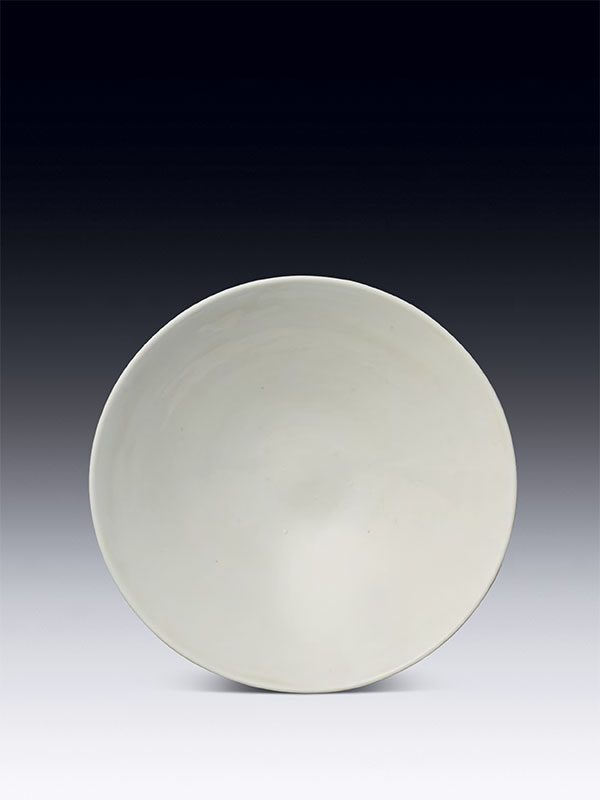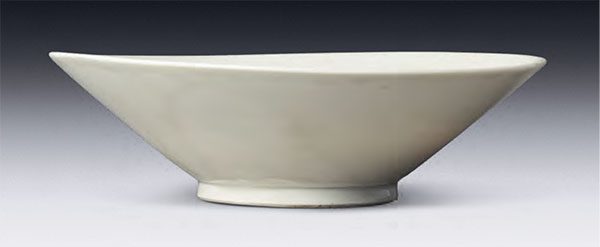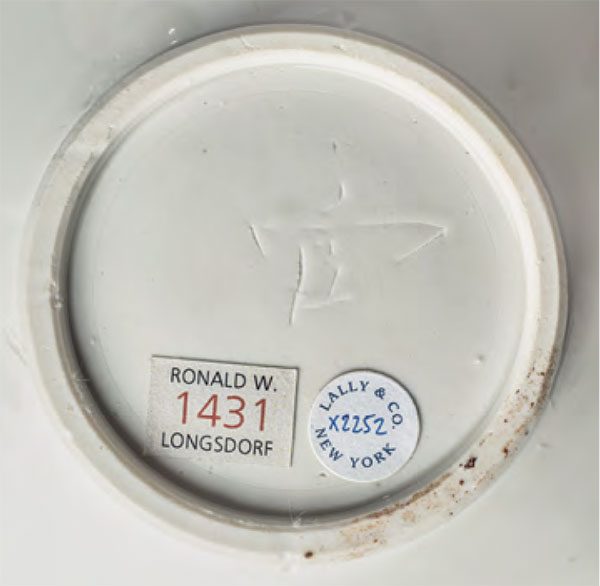DING STONEWARE BOWL WITH ‘GUAN’ MARK
定窑“官”字款碗
A thinly potted conical bowl with flared sides rising from a concave rounded foot to a well-finished lipless rim. The bowl is covered inside and out with a clear glossy glaze, showing a few ‘tear marks’ on the underside. The slightly recessed flat base is also glazed. The well-trimmed edge of the foot is unglazed, exposing the fine white porcelain. The base is incised through the glaze on the base before firing with the character 官 ‘guan’ (official).
A similar conical bowl of slightly larger size, with incised ‘guan’ mark on the base was discovered in 1985 in a hoard of thirty-two ‘guan’-marked porcelains and other ceramics excavated at Huoshaobi village in the northern suburbs of Xian and now in the Xian Institute of Cultural Relics Preservation.[1] White porcelains bearing the incised mark ‘guan’ have been excavated at the Xing and Ding kiln sites in Hebei province and in many different regions in China, from dated tombs, pagoda foundations and hoards. The earliest documented discovery of ‘guan’-marked white porcelains to date was at Lin’an, Zhejiang province in the tomb of a high official named Qian Kuan (d. 895), the father of Qian Lu, the first king of the State of Wu, and the tomb of his wife, Madam Shuiqiu (d. 901), where many white porcelain dishes, bowls and cups with incised marks of 官 ‘guan’ (official), and 新官 ‘xin guan’ (new official) were found. Some scholars have suggested that porcelains incised with ‘guan’ and related marks must have been a special category of ware made for the use of high officials or as special tribute wares. A ding waterpot with a guan mark is in the Meyintang collection.[2]
PROVENANCE:
Collection of Ronald W. Longsdorf, U.S.A.,
- Zhang (ed.), Zhongguo chutu ciqi quanji (Complete Collection of Ceramic Art Unearthed in China), Vol. 15: Shaanxi, Beijing, 2008, p. 92, no. 92, described as Tang-Five Dynasties and attributed to the Ding kilns at Quyang, Hebei province
- Krahl, R. Chinese Ceramics from the Meiyintang Collection Volume One, Azimuth Editions, London 1994, fig. 341, p. 196



